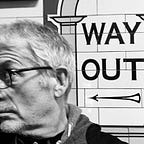Producing Political Drama in a Pandemic
What happens when you can’t produce a show in a studio or an event space full of techs, talent and audience members? You shoot it from home!
The most ambitious attempt at a virtual production so far in the pandemic is the political convention. Done with varying degrees of success, the Democratic National Convention was a first of its kind historic shot at this new type of program. On Thursday night, when Joe Biden, now officially the Democratic nominee for president, gave his rousing acceptance speech, viewership hit 21.78 million people across ABC, CBS, NBC, Fox News, MSNBC and CNN, according to The Hollywood Reporter. Across all four nights, the trade magazine reported, the convention averaged 20.12 million viewers on the six networks, down by 21 percent compared to 2016’s average of 25.51 million viewers on the same six outlets.
Last week’s Democratic National Convention proved that innovative solutions are everywhere, and they are looking better and better as their use is expanded over the broadcast and digital spectrum.
Early on in television’s history when news chat shows like ABC’s Nightline, of which I was once a producer, brought in guests from far away, lines and loops from the phone companies were standard but had to be ordered far in advance. As time went on and shots needed to be more immediate, those lines and loops were replaced with microwaves and satellite trucks, creating live, up-to-the-minute content.
Then along came Skype, FaceTime, Webex and Zoom. And with a little light and a decent camera and mic, everyone’s home could become a makeshift TV studio.
Every day, these homemade shots are looking better and better. Granted, some of the pros have unmanned field TV gear in their homes, but not everyone does, and the guests probably don’t. So how is it being used? Here are some recent examples thanks to a skim of recently published stories.
During the pandemic, new shows were created that helped viewers feel connection even while all of the talent was social distancing. For example, Global Citizen’s musical fundraiser, One World: Together at Home, saw NBC’s Jimmy Fallon, ABC’s Jimmy Kimmel and CBS’ Stephen Colbert host the broadcast from their respective homes while musical acts such as Lady Gaga, Taylor Swift, Jennifer Hudson and numerous other artists performed, also from their homes.
CBS’s legal drama, All Rise, created a virtually-produced episode inspired by the COVID-19 crisis. (All Rise has since had a crisis in the writers’ room, with five of the show’s seven writers — three of those people of color — quitting over disputes over how showrunner Greg Spottiswood handled race and gender in the CBS drama starring Black woman Simone Missick, according to the New York Times and other publications) The drama, from Warner Bros. TV and CBS TV Studios, was filmed using Facetime, Zoom and other video-conferencing technology. While talk shows returned relatively quickly with hosts broadcasting from home, All Rise was the first scripted series to be produced virtually.
The cast and crew of Apple TV+’s Mythic Quest: Raven’s Banquet also created an episode shot only on iPhones that was released May 22.
Day-and-date shows — such as local and national news and daytime and late-night talk — were quick to switch to producing from home and have marched forward during the months of quarantine with guests chiming in with varying levels of broadcast quality. Much of local news all over the country is still being done from home. Producers are doing lineups, interviews are happening online, and elements are being fed over the internet to editors who assemble and distribute the finished product. All of it has evolved into collaborative home efforts.
What was once the domain of the video blog and YouTube livestreamers is now a mainstay of today’s modern media landscape.
Considering all of this, I have some questions:
— How much of this new production paradigm will continue to exist after the virus has passed?
— How will the unions deal with this new normal?
— How will all the highly qualified professionals integrate into the new world?
— What new software and hardware will emerge?
— Will viewers no longer mind if production quality has declined, or will home production step up and improve with time?
It seems to me, the longer we work from home, the better TV production in the time of coronavirus will become.
But once this is all over, will it persevere?
We’ll see what the Republicans learned from the Democrats’ virtual show later this week.
An edited (and earlier) version of this blog was originally published by Definition6.
[Image of anchor in home studio courtesy of Doreen Gentzler, NBC’s WRC Washington, DC.]
